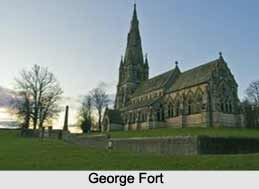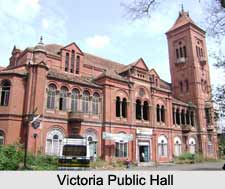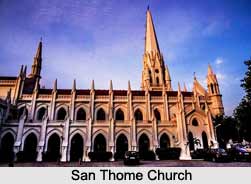 British monuments in Chennai, Tamil Nadu, are the testaments of elegant and impressive architecture which have contributed substantially to enrich the national heritage of the country. These were designed by famed British architects during the colonial rule. Presently they are recognized as prominent landmarks of the city. Currently, in modern India, these monuments serve various public sectors and as prominent tourist destinations. British monuments in Chennai are exemplary of some of the finest blend of Indian and colonial architectural styles.
British monuments in Chennai, Tamil Nadu, are the testaments of elegant and impressive architecture which have contributed substantially to enrich the national heritage of the country. These were designed by famed British architects during the colonial rule. Presently they are recognized as prominent landmarks of the city. Currently, in modern India, these monuments serve various public sectors and as prominent tourist destinations. British monuments in Chennai are exemplary of some of the finest blend of Indian and colonial architectural styles.
Fort St. George
Fort St. George is an eminent colonial monument of Chennai built by the British East India Company and supervised by Andrew Cogon and Francis Day. Built in western architectural style, the monument was completed in 23rd April 1640 for establishing a Control Centre. The day of the completion of the building was the St George`s Day who was the patron saint of England and thus the monument attained this name. Within the campus of this fort, Fort Museum and Saint Mary`s Church are located, the latter being the most ancient Anglican Church. Currently Fort St. George serves as the headquarters of the Legislative Assembly and the museum houses splendid collection of personal belongings of the members of British and French East India companies as well as of the rulers of Mughal Dynasty.
 High Court Building
High Court Building
High Court Building is enlisted amongst the three High Courts in India which were established at the Presidency Towns by Letters Patent granted by Her Majesty Queen Victoria, dated 26th June 1862. The construction of the building was guided by the famous British architect Henry Irwin. It is regarded as the highest court in Tamil Nadu. It was constructed in the year 1892 and exhibits a red Indo-Saracen structure, serving as an important landmark of Chennai. The building is amongst the largest judicial buildings of the world. The building has an appealing architecture comprising stained glass, walls with ornamental decorations and beautiful minarets.
Senate House
Senate House is counted amongst the architectural wonders of Chennai. It was built by Robert Fellowes Chisholm, an illustrious British architect, in 1873 century. Impressive Indo-Saracen style of architecture can be witnessed in this monument, adorned with intricate artistic elements. It is in fact enlisted amongst the best and oldest testaments of Indo-Saracenic architecture in India. Senate House has a massive central hall with stone pillars. The hall has brilliant proportions and is regarded as the finest of its kind in the country. Other architectural features of the building are immensely appealing. Elegant porticos embellish the entrances of this building.
 Ripon Building
Ripon Building
Ripon Building is another majestic British monument of Chennai which currently serves as the seat of the Chennai Corporation. The building exhibits a fine amalgamation of three architectural styles viz. Corinthian, Ionic and Gothic. This white imposing structure was constructed by Loganatha Mudaliar and was named after Lord Ripon the Governor-General of British India and the Father of local self-government. The Municipal Corporation of Madras settled in the building in the year 1913 after operating from several other buildings. The building has also undergone an extensive phase of renovation under the Jawaharlal Nehru National Urban Renewal Mission which was carried out to restore its original grandeur.
Freemasons Hall
Freemasons Hall was built by the East India Company during the colonial era. It was built in the year 1923 with the aim of creating military lodge for British soldiers. It is one of the magnificent buildings of the state of Tamil Nadu and is designed in Greek style. Massive pillars and Italian marbles and tiles used in the decorations of the interior hall stylize the building in the most exquisite manner. Masonic emblems adorn the inner walls of this two storey building.




